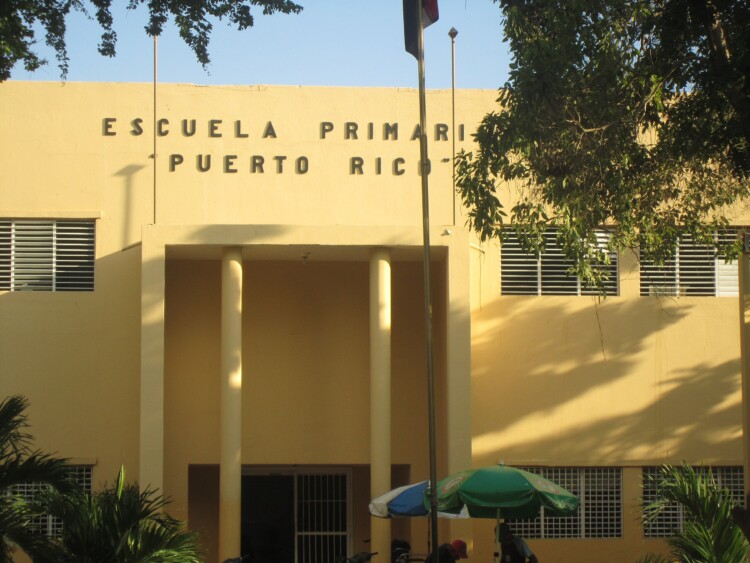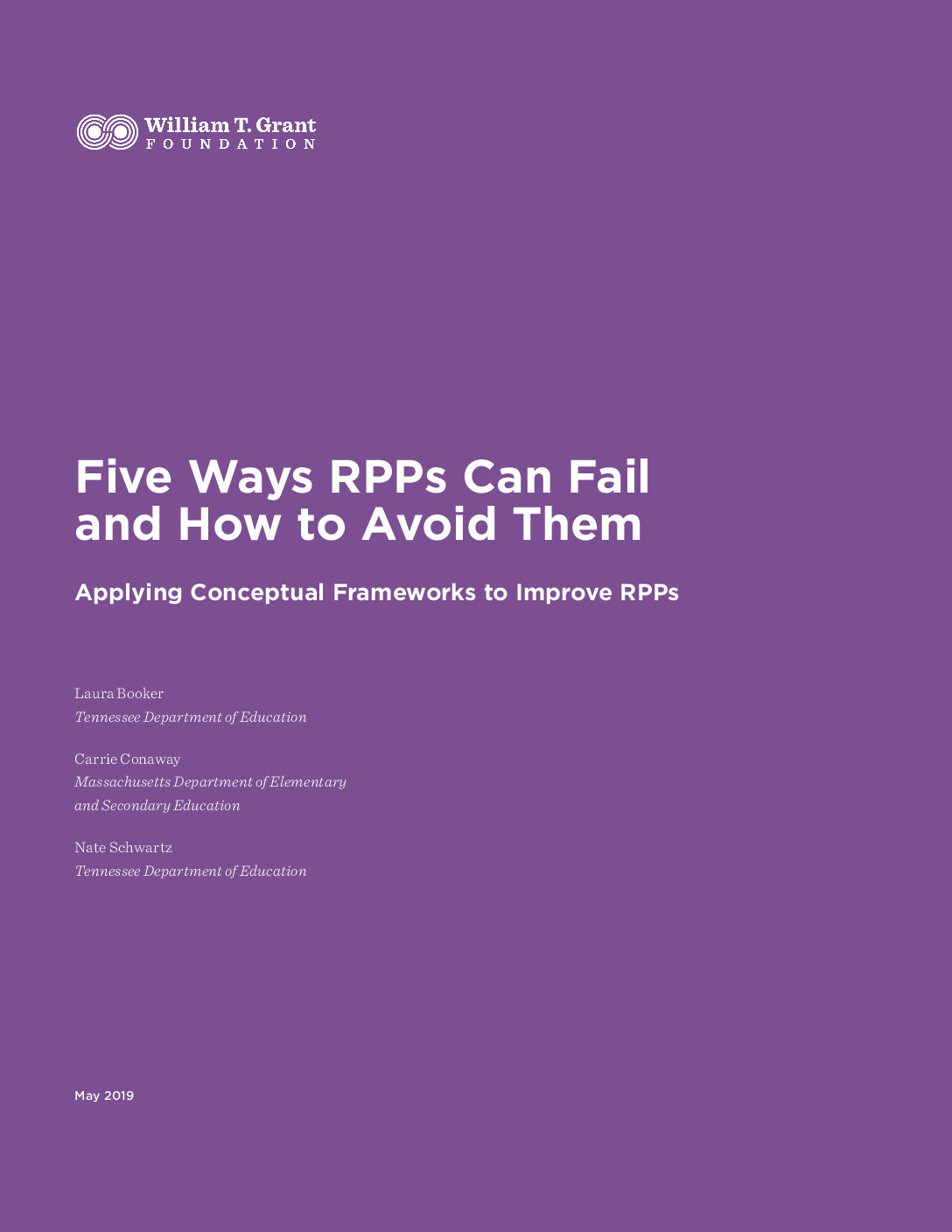Research-practice partnerships (RPPs) represent a promising idea: that by integrating the ideas and experiences of educators, research can produce more usable, relevant, and sustainable results for practice.
RPPs are currently being carried out in urban school districts in an effort to address persistent gaps in opportunity and achievement. These partnerships have been defined in the literature as having five characteristics—they are long-term, organized around problems of practice, mutualistic, data-driven, and involve explicit mechanisms for fostering partnerships. However, we think that RPPs in urban districts may benefit from a sixth feature. To reduce inequality they need to create explicit mechanisms for participants to directly confront the historical and systemic sources of racism and inequality that underlie the educational challenges they have been formed to address. In a phrase, this characteristic could be called “mechanisms for recognizing systemic racism.”
Moving towards equity
The movement toward research-practice partnerships has been shaped by increasing pressure to use research to guide educational improvement. Additionally, it recognizes that for research to impact practice it must directly address practice, which demands a focus on relevance, timeliness, and context (Coburn, Penuel & Geil, 2013).
The turn towards RPPs is significant and important. There is mounting evidence that RPPs support improved educational outcomes through the increasing use of research in decision making (Tseng, 2012 as cited by Coburn & Penuel, 2016) and by addressing persistent problems of practice.
It is notable that many RPPs are situated in urban school districts with persistent achievement and opportunity gaps—districts where the majority of students are from low-income families and families of color. These districts face structurally, organizationally and culturally complex challenges. For example, inequality of access and opportunity is partly rooted in systemic racism that plays out in schools—in the ways schools are funded, the expectations communities have for their students, and the ways students’ knowledge and experience are utilized (or not utilized) as resources for learning.
From the health literature we know when research and practice seek to purposefully reduce “the multiple dimensions of racism,” health improves and disparities in health are reduced for stigmatized racial groups. From the education literature we also know that when systemic racism is taken up as central to problems of practice, equitable opportunities and outcomes across race are possible. We argue the same applies to RPPs.
Although RPPs may be an important strategy for addressing inequities, explicit direct attention to race, class, and equity is less fully articulated in the framing RPP literature. The five characteristics listed above create a context for surfacing equity issues, but they could fail to do so without explicit attention and effort. Christine Sleeter argues that “Persistent color-blindness and equity-blindness thwart the ability of education leaders to make substantial and lasting research-supported changes that actually reach students, especially students of color.” Highlighting a study conducted by Ares and Buendia, she notes that without attention to systemic racism, improvement efforts focused on issues such as teacher practice and student achievement in high-poverty districts fail to make lasting reforms. There is also the danger of stereotyping students of color and their families participating in reform projects, for instance when lack of opportunity and achievement are viewed as an individual trait rather than a part of structural and systemic processes.
Examples
We began to articulate the need for “mechanisms for recognizing systemic racism” as a part of RPP work we undertook together via the William T. Grant Foundation Distinguished Fellowship program. The California Tinkering Afterschool Network [CTAN], led by Bronwyn Bevan was an RPP studying how best to scale maker programs in afterschool settings serving low-income communities. Early in its history, the RPP employed specific mechanisms to surface the beliefs and values that the educators and researchers had for their work together. Through this process, participants recognized and discussed in detail the deficit views that youth in their programs were regularly subjected to in school and in society at large. This led them to identify ways in which afterschool programs, and making programs in particular, could counteract these deficit narratives. As a result, over time, the RPP’s entire research focus shifted to address how to support equity-oriented teaching strategies in maker programs for low-income youth and girls.
School improvement efforts to expand teachers’ uses of equity-oriented strategies for designing learning experiences that build on students’ diverse interests and experiences are more likely to take root if RPPs have explicit mechanisms for unpacking the histories and social contexts in which such instructional moves may be more or less common, valued, or understood. Teachers may be more likely to sustain their efforts to build on students’ interests if RPPs engage them with school- and district-level data that reveal enduring patterns related to, for instance, whose histories form the core of the curriculum, or which cultural communities are represented by protagonists found in common readings.
Explicit engagement with the intersections between systemic inequities and an RPP’s identified problem of practice might address, for example:
- Identifying how RPP-designed approaches will be used to support/challenge normative schooling practices.
- Mapping social and cultural histories of inequities affecting the school and community population, as a way to identify otherwise hidden systemic issues or decision points that may pertain to the improvement efforts.
- Expanding understanding of important stakeholders to include in the design, conduct, or dissemination of RPP work.
Many RPPs have been organized to include diverse voices (e.g., teachers, parents, school leaders) to frame and address persistent educational problems. For example, in Michigan, RPPs bring teachers (school and after-school), researchers, and youth from non-dominant communities together to examine youth learning in making spaces, both in and after school. In partnerships like ours, youth, teachers, and researchers co-select examples of evidence of learning, and collaboratively construct narratives of learning based on these pieces of evidence. This practice is meant to foreground a shared commitment to noticing and valuing youth’s cultural knowledge and practice as assets for consequential learning and important contributions to the curriculum. Historically, the cultural knowledge and practices of youth from non-dominant communities have been delegitimized in school spaces. The group explicitly notes how student learning builds on youth’s funds of knowledge, how teachers leverage that knowledge, and how these forms of knowledge and the evidence of learning relates to (and challenge) common school practices.
The five characteristics of RPPs have been shown to change the very conditions and contexts in which the improvement efforts are undertaken. We believe that when diverse voices are gathered at the table to address persistent and pressing problems, adding a sixth characteristic to the partnership-mechanisms for recognizing systemic racism—is needed to ensure that efforts fully engage the problems occurring within communities challenged by systemic racism and inequity. As RPPs take steps in this direction, studies are needed to examine whether such efforts help to reduce racial and ethnic inequalities in youth outcomes.






